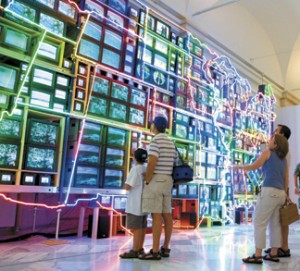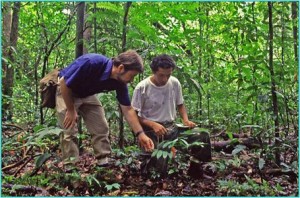From the Secretary: A Smithsonian that is more than the sum of its parts will be at the center of challenges facing our country and our world
This is an exciting time at the Smithsonian—a time for renewal and rethinking our role in the life of the nation and the world.
 On Oct. 23, four of our museum and research center directors (Betsy Broun, Johnnetta Cole, Charles Alcock of the Smithsonian Astrophysical Observatory, and Steven Monfort of the National Zoo) addressed the Smithsonian National Board regarding our new strategic plan, ”Inspiring Generations Through Knowledge and Discovery, 2010-2015.”
On Oct. 23, four of our museum and research center directors (Betsy Broun, Johnnetta Cole, Charles Alcock of the Smithsonian Astrophysical Observatory, and Steven Monfort of the National Zoo) addressed the Smithsonian National Board regarding our new strategic plan, ”Inspiring Generations Through Knowledge and Discovery, 2010-2015.”
The directors each spoke about the grand challenge and new interdisciplinary center in the area related to his or her own particular unit.
The four new centers envisioned in the strategic plan will communicate a more unified vision for the Institution and build our case for relevance in addressing four grand challenges: Unlocking the Mysteries of the Universe; Understanding and Sustaining a Biodiverse Planet; Valuing World Cultures; and Understanding the American Experience. The centers will speak with a clear voice about our role in meeting each grand challenge while stimulating multidisciplinary activities across our many units.
The Smithsonian has long used centers (the Smithsonian Environmental Research Center, the Smithsonian Tropical Research Center, the Center for Earth and Planetary Studies) to bring focus to our activities focused on a common theme. The centers envisioned in the new strategic plan will build on our existing core strengths and enable us to communicate more clearly how the Smithsonian’s disparate parts work together to produce a whole.
By bringing coherence to our units’ efforts, the new centers will create an “opportunity space” for new funding and
pan-Institutional initiatives. Each center will encourage and coordinate interdisciplinary activities among the core units and reach beyond those units to other Smithsonian entities. Each center will independently initiate programs and seek new funding, and each will bring to its activities scholars and scientists from throughout the Institution, much as our recent online education conferences have done by coordinating our rich resources and bringing them to bear on the legacy of Abraham Lincoln and addressing the challenges of global climate change.
At the National Board meeting, Betsy Broun of the American Art Museum spoke about how the Smithsonian can help us understand the American experience—a subject that encourages rich collaboration across many SI units and with many outside partners, such as our Smithsonian affiliates, the National Archives, the Library of Congress, government agencies and academic institutions. She explored the topics of immigration and the struggle for justice to illustrate the

Visitors to the American Art Museum marvel at "Electronic Superhighway: Continental U.S., Alaska, Hawaii" by Nam June Paik. (Photo by Ken Rahaim)
exciting ways that the Smithsonian can draw on our talent and collections to explore myriad themes focusing on the century from the Civil War to the civil rights era. “Because of our immigrant history,” she said, “American society has always been a global society, valuing world cultures. You could hear as many different languages spoken on the streets of San Francisco in 1850, during the Gold Rush, or on Hester Street in New York City in 1890, as you can today.” Both
she and Johnnetta Cole of the African Art Museum stressed that “America is an experiment in living with people from around the globe, an experience that we can explore in depth across many of our museums and programs.”
As we increasingly collaborate across units and disciplines, transform formal and informal education by breaking down the barriers between them, embrace technology and new media, and encourage entrepreneurship
and partnerships, we will expand the Smithsonian’s service to the nation and the world in exponential ways, addressing the key challenges of our day.
Posted: 1 November 2009
- Categories:




